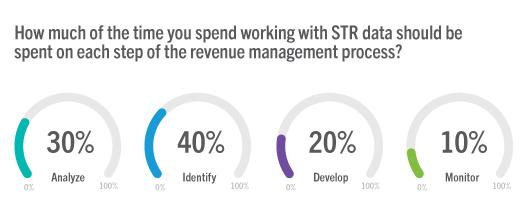If you’re familiar with the hotel revenue management discipline, you probably know that its strategic cycle comprises four main stages—analyze, identify, develop and monitor. You’re probably also familiar with the STAR Report and the dSTAR platform, which empower you with the data intelligence needed to navigate each of those stages and measure your property’s performance on an ongoing basis.
But how much time should you allocate to each stage of the revenue management life cycle? And which members of your team should be involved? We broke it down to guide you through the process.
